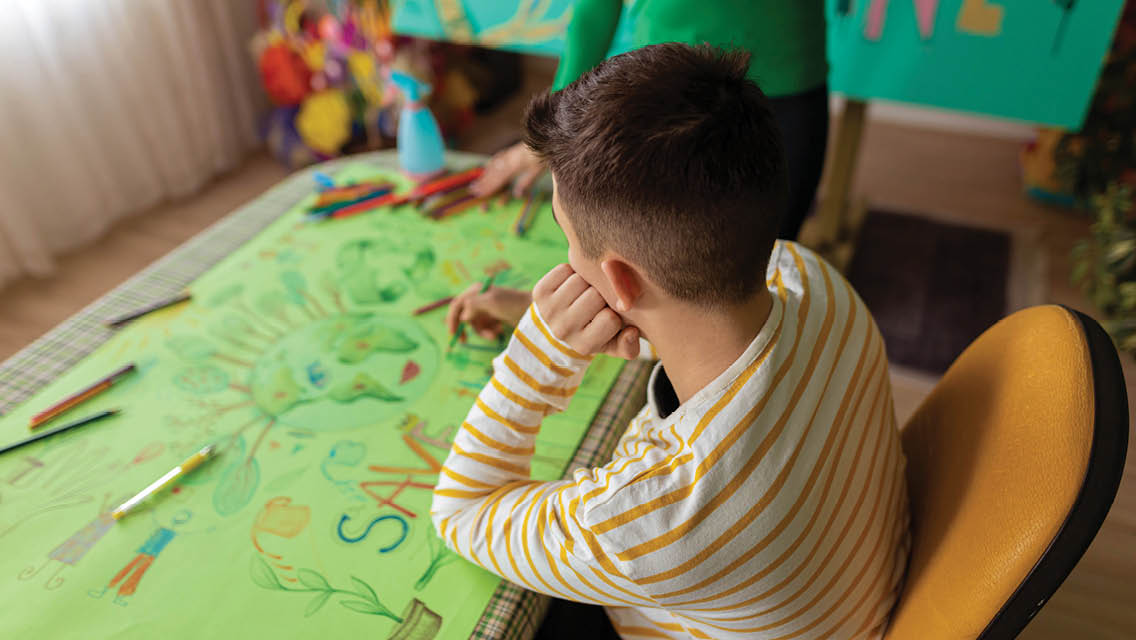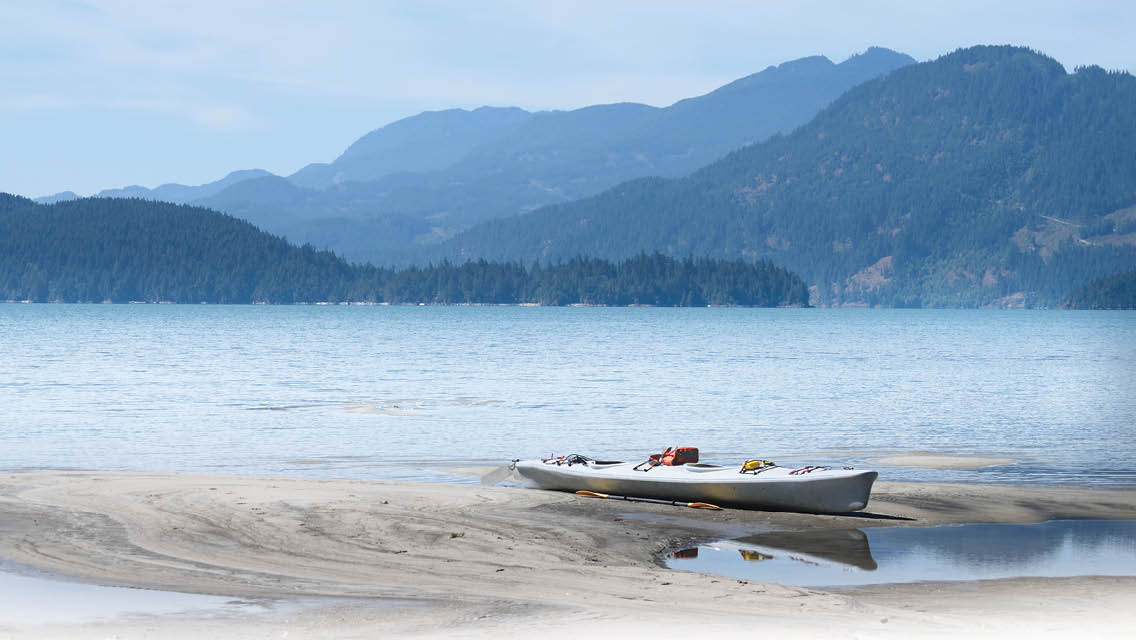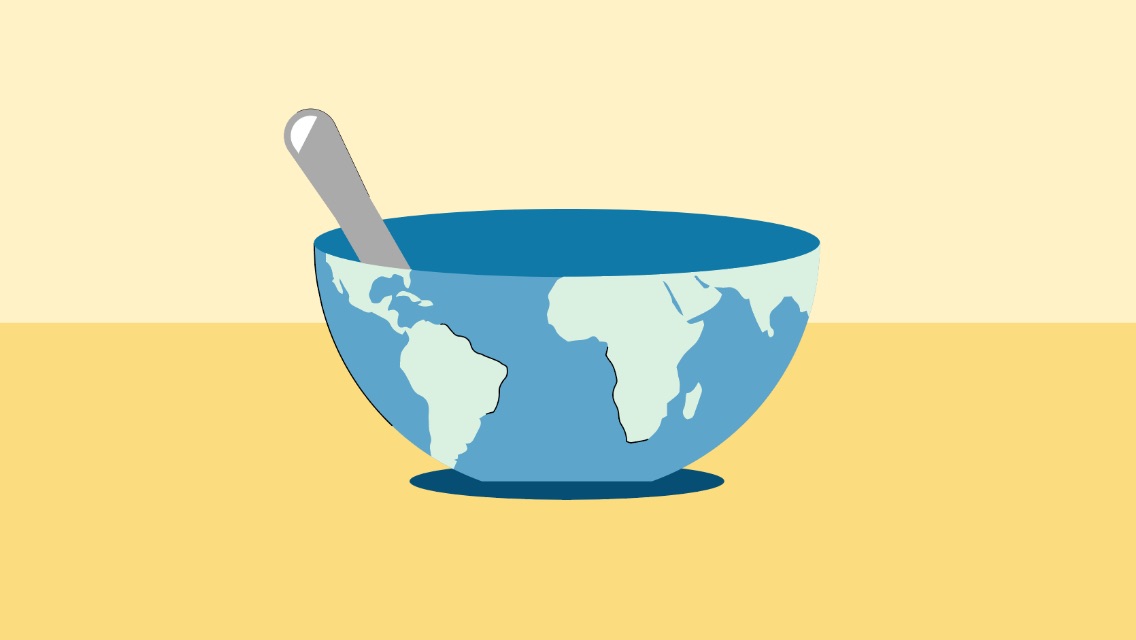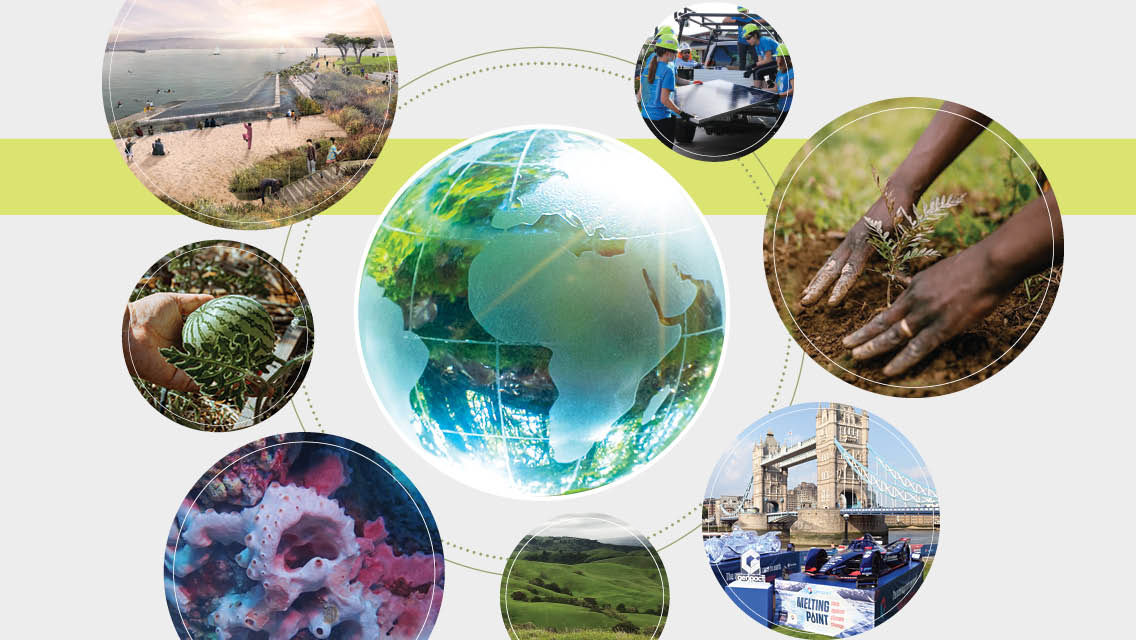I don’t think my husband and I had any real conversations with our kids about the climate crisis when they were growing up. We read Dr. Seuss’s The Lorax and had a subscription to National Geographic Kids, which I assume touched on the topic. But until recently, we’d never asked our kids — now in high school and college — what they know, wonder, or fear about our swiftly warming planet.
We never discussed how extreme weather events, the loss of clean water, species extinction, and the displacement of millions around the globe might affect their futures — or what can be done about it.
Our family’s silence on this subject is not unusual. Though more than 80 percent of U.S. parents think kids should be learning about climate change, only 45 percent of us have actually talked to our own kids about it, according to a 2019 NPR poll.
As for why I never brought it up, I’m sure it had to do with my own anxiety and ignorance, plus not knowing what to say that wouldn’t freak them out.
But just because we’re not talking to them doesn’t mean our kids aren’t aware of what’s going on. Some learn about climate change at school (though that same NPR study reports that only 42 percent of teachers talk about climate change in the classroom). But if my kids are representative of the millions of other young people with smartphones, they’re getting the bulk of their information — and misinformation — about climate change from Instagram, TikTok, and Twitter.
“Climate change is in the air and on the air,” says clinical psychologist Daniel Masler, PsyD, who works with children and adults struggling with the impact of climate change on their emotional well-being. “Your kids are going to hear about this, and they’re going to be dealing with it.”
Without trusted adults to provide context and a safe emotional environment to process what climate change might mean for their lives, kids are vulnerable to climate anxiety. In a recent international survey of 10,000 people ages 16 to 25 published in the Lancet, 45 percent of respondents reported that their feelings about climate change had “negatively affected their daily life and functioning.”
“Teens in particular are at risk,” says Masler. Climate anxiety, the COVID-19 pandemic, social-justice issues, political unrest, bullying, substance abuse, mental-health factors, and more — today’s kids are facing an unprecedented array of worries.
As a result, Masler says, “We’re seeing increasing rates of suicide and suicidal thinking among this group.”
Why Talking Matters
“We know from work with children who are at risk that when we talk things through, we can contain the emotions better and adapt,” says Masler.
Talking normalizes fear and decreases feelings of isolation. “While inviting kids into these discussions can be scary — especially since we don’t have all the answers — conversation can generate problem-solving, action, and new ways of thinking. And that’s what’s needed most,” he says.
“Kids are often leading these conversations,” adds environmental author and educator Bill McKibben. “People like Greta Thunberg have emerged as voices of sanity and reason because they’re not willing to sugarcoat or minimize our dilemmas.
“But kids are also anxious. We need to be able to assure them that there are lots of us working in tandem to at least try to solve these crises.”
Keep the Conversation Going
If you’d like to talk about climate change with the kids in your life, consider Masler’s four guidelines for initiating and sustaining conversations with kids grade-school age and up.
- Check in. When the topic comes up (or you want to bring it up), take a deep breath and ask yourself, What’s going on here? This could mean simply looking at the child in front of you, noticing the physical space you’re in, and reflecting on what’s been happening that day, so you get a sense of the state of mind of the young person. Or pause to notice your own feelings and thoughts as you enter the conversation.
- Start with an open-ended question. Make a simple observation and ask a question that invites discussion: “You seemed worried about that hurricane video you showed me the other day — what are you thinking about it now?” Then listen.
Your child may have questions for you, too, and it’s OK if you don’t have the answers: “Let’s think about this together.” This sets you up to talk through ideas that empower the child to envision a healthier world, including ways to act.
Younger children may be interested in picking up trash in a park or planting a garden with you; older kids may be ready to connect their concern to political action.
It’s OK to share that you’re worried, too. You don’t have to withhold hard information — with support, most kids can handle the truth — but be careful not to perpetuate messages of doom and gloom.
- Watch for info overload. After you’ve responded to your child’s questions, pause and ask, “Is there anything more you want to know?” This gives children the opportunity to tell you exactly where they are developmentally. They might say “I’m good,” which means they’ve taken in enough and they’re going to go off to process.
Meet kids where they are, and don’t push an agenda that’s too far outside their own.
- Leave the door open. When you wrap up your conversation, let your child know the subject isn’t closed. “Let’s talk about this more sometime soon” is a great way to let kids know they can come to you with further questions, and it sets the expectation that you’ll bring the topic up again after they’ve had some time to absorb any new information or emotions.
You and your kids are not alone in facing this challenge, and there are many resources online and elsewhere to help. Masler and his colleagues have put together a website with resources for parents, educators, and older kids including free handouts and other tools to share with kids from pre-kindergarten up. Check it out at www.talkclimate.org.
A Long-Overdue Conversation
I recently initiated my own long-overdue conversation about climate change with my daughter and three of her cousins — a group ranging from 12 to 17 years old. I wondered what they knew and what they wished adults would talk to them about.
The two middle-schoolers were aware of climate change but didn’t seem particularly worried, certain that technology would come to the rescue. “Developmentally, they’re right on track in their thinking,” says Masler. “Tweens are putting together the world rationally, even scientifically. They want to know if technology can save things — like, can we all get electric cars and make it all right?”
The high-schoolers, however, were angry. “It’s the people in power. They’re not doing anything that’s helpful,” my oldest nephew said.
I asked the teens what they wished adults would say to them. “I wish schools would offer us more support and teach us what’s really happening,” said my daughter.
My nephew added, “It seems like a lot of adults don’t really care, like they’re pushing it away from themselves and saying it’s our problem.”
Honestly, I didn’t feel great after our conversation; we didn’t resolve anything. I worried that the younger ones weren’t paying enough attention and the older ones weren’t able to evaluate the information they were seeing on social media.
But Masler assures me that I’d gotten an important ball rolling. “One thing you did by having the conversation was raise awareness,” he says. “And you probably relieved a bit of anxiety, because now this is something they can talk about. It cannot lurk while we’re talking about it.”





This Post Has 0 Comments